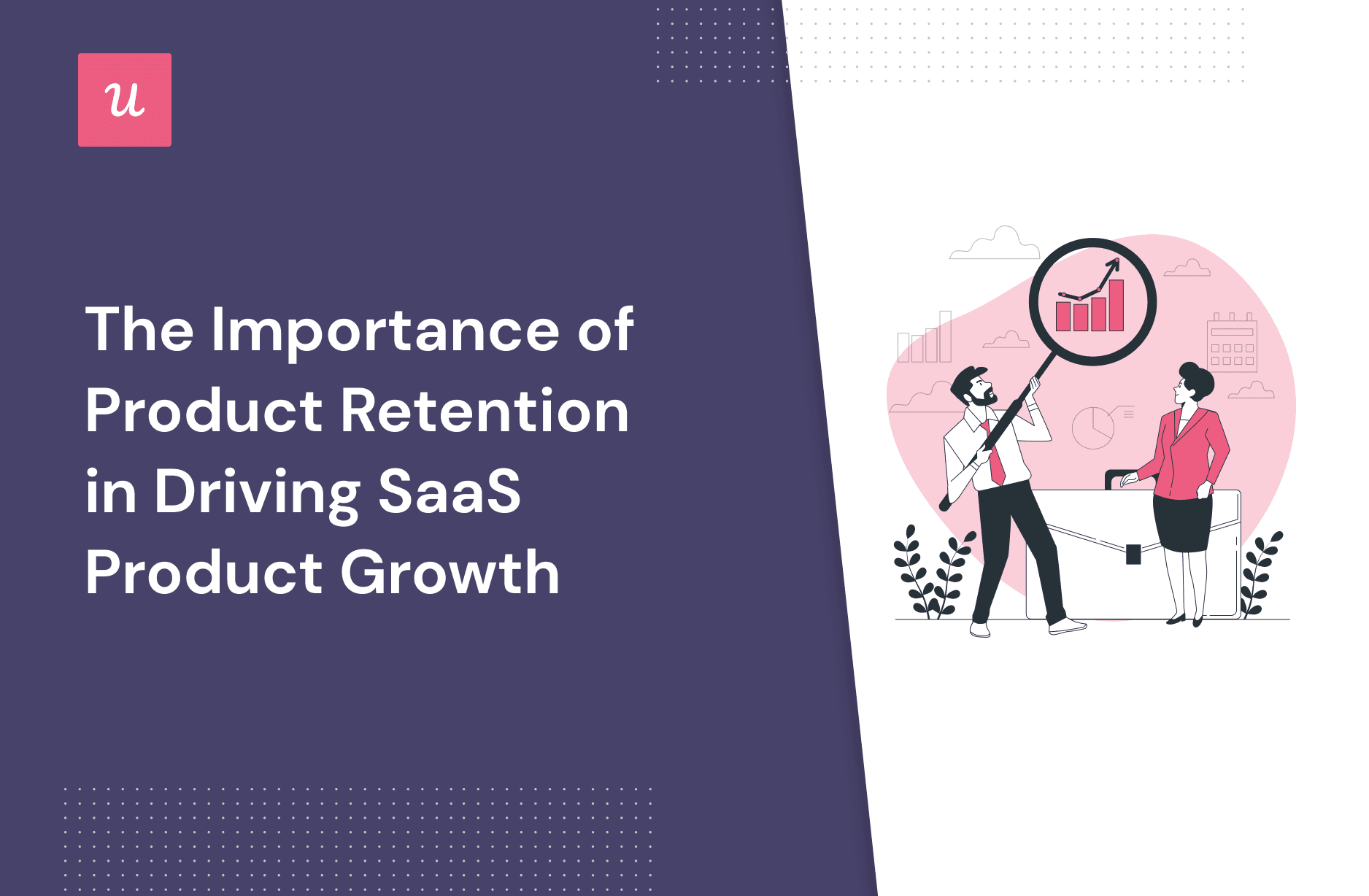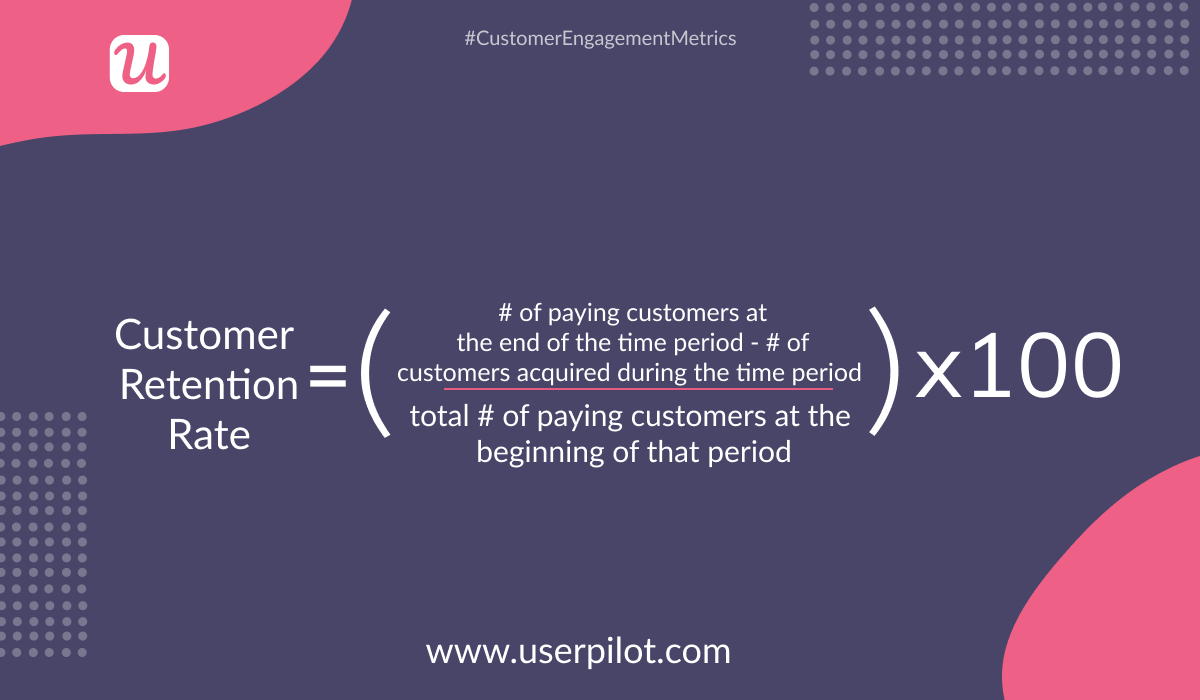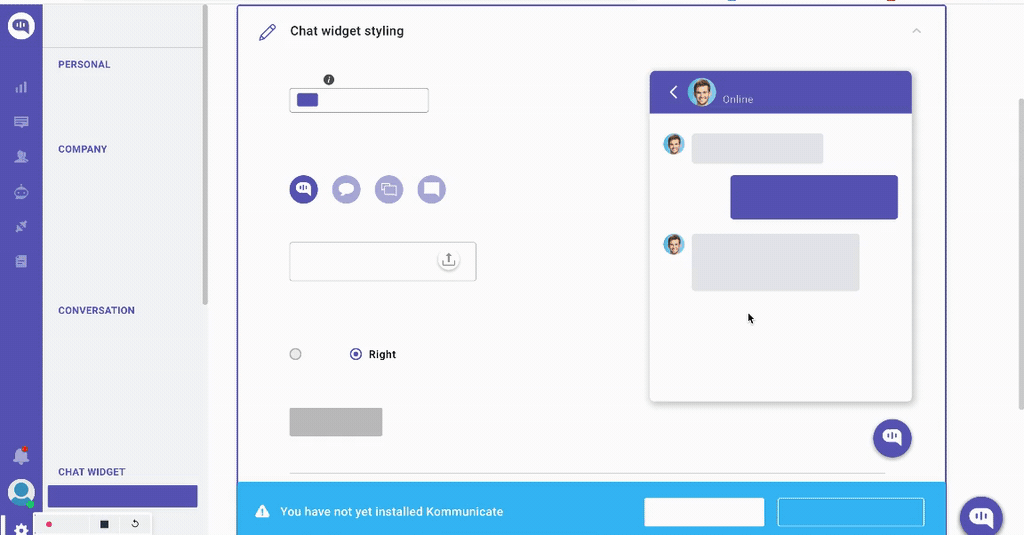
The Importance of Product Retention in Driving SaaS Product Growth
While gaining new customers is exciting, retaining them is where your SaaS will generate revenue.
Entrepreneurs understand this simple truth, but retaining customers is much easier said than done, especially when you operate a software company in a competitive market. In this article, we examine product retention strategies that work and third-party tools you can use to drive retention, even on mobile apps. Let’s get started.
Get The Insights!
The fastest way to learn about Product Growth, Management & Trends.
TL;DR
- Product retention means getting your current customers to return to your product for additional purchases, sessions, or engagement.
- A high customer retention rate leads to improved customer loyalty, increased LTV, and a boost in revenue.
- Both acquisition and retention are critical for business growth; acquisition increases your user base, while retention grows your customer lifetime value.
- Important customer retention metrics include feature adoption rate, product stickiness, and customer retention rate.
- Early-stage retention is focused on getting new users to activation as quickly as possible.
- Mid-stage retention targets customers that are already using your product. The goal here is to drive product stickiness and make using your product a habit.
- Long-term retention strategies focus on account expansion and providing value through continuous product improvements.
- Retention starts with onboarding; always segment and personalize your primary onboarding process for new customers, including mobile onboarding.
- Use checklists and interactive walkthroughs to drive feature adoption for both new and existing users.
- Modals sent at the right time will help you drive account expansion, increasing your retention through advanced features and added value.
- Use product analytics and retention analysis to find friction points and understand why users churn.
- Collect customer feedback and mobile feedback to understand what makes them stay or leave.
- Userpilot and Mixpanel are some of the best tools to drive long-term retention for SaaS companies.
What is retention in product management?
The goal of product retention is to retain your current customers and to get them to visit your product for future purchases, sessions, or engagements.
It goes beyond having a customer success team that answers requests and facilitates onboarding. A successful retention strategy focuses on providing value to existing customers through positive experiences that result in long-term relationships.
Why is product retention important?
Retention is crucial to product growth. It improves a number of metrics that are essential for every SaaS company.
- Increased LTV: Your business is only profitable if customer LTV exceeds your acquisition costs. Retention helps you achieve this. The more customers stay with you, the more money you can make from each of them to recover your customer acquisition costs and turn a profit.
- Account expansion opportunities: When your product offers value to your existing customers, they are more likely to upgrade. Therefore, your retention strategy will naturally lead to account expansion.
- Improved customer loyalty and advocacy: Once you’ve retained a customer, you have a big advantage in selling to the people they know. In other words, the user can act as your ambassador and show friends and colleagues how valuable your app is.
- Revenue growth: What management wants to see at the end of the day is the net revenue accumulated over X period. The benefits mentioned above all work together to help you increase your revenue.
Product retention vs. customer acquisition for SaaS growth
While both acquisition and retention are essential to business growth, most SaaS companies rely on retention. What is the point of acquiring new customers if you are not planning to retain them?
Research shows that acquiring new users costs five to twenty times more than retaining them. In a nutshell, keeping your existing users is more cost-effective than trying to constantly find new ones. Increasing the retention rate of your users by 5% can increase revenue by 25%-95%.
Explore how you can improve the retention in your mobile app with Userpilot’s brand-new mobile features.
Important customer retention metrics
The feature adoption rate, product stickiness, and customer retention rates are all metrics that show how your product is performing. Let’s take a closer look.
Feature adoption rate
The feature adoption rate measures how much your users are using your product’s features.
For a SaaS product, your value lies in the features you’ve created. The more users adopt and take advantage of these, the more of your product they’ll experience. Users who, for whatever reason, stop engaging with and fail to adopt your key features are likely on their way to churning.

Product stickiness
Product stickiness is calculated by dividing your daily active users (DAU) by your monthly active users (MAU).
A high stickiness ratio shows customers love your product and are always logging in. Not all SaaS companies are the same, so don’t expect to have the same stickiness ratio as other products in the industry.
In particular, the SaaS industry has an average stickiness rate of 13%. In total, users are active for a little less than four days per month. Furthermore, the median SaaS usage rate is 9.3%, which is less than 3 days per user per month.

Customer Retention Rate
As the name implies, customer retention rate refers to the number of customers you retain over a specific period. This is calculated by dividing (the number of customers at the end of the period minus the number of new customers acquired during the period) by the total number of customers at the start of the period and multiplying the result by 100.

Your retention rate can provide insight into your company’s renewal rates, so you can predict the lifetime value of your customers and take steps to boost retention.
Note that the customer retention rate is not the same as the user retention rate. The difference is that the former shows you the number of paying customers retained while the latter shows how much of your user base (both paid and free) has been maintained over time.
What are the three phases of product retention?
Through the user journey, product retention is divided into three stages: Early-stage, mid-stage, and long-term retention.
Early-stage retention
Early-stage retention begins the moment a user signs up to use your product.
Your goal is to get users to the activation point as quickly and efficiently as possible. In this stage, your goal should be to get users to use your product more than once and experience the value it provides.
Provide customized onboarding flows, drive engagement with contextual in-app guidance and get them acquainted with your core features.
Mid-stage retention
Your mission in this stage is to make using your product a habit. In order to achieve this, you must create such a sense of satisfaction from the product that users don’t need to be reminded to use it again because they have incorporated the use of the product into their routine.
For businesses to increase the number of initially retained users who become habitual users, it is vital to understand habit formation psychology to keep users hooked (which Nir Eyal discusses in-depth in his book, Hooked) and then implement growth tactics.
Long-term retention
This stage is about driving more LTV and increasing MRR with account expansion techniques. Relevant upgrades mean customers find more value and stay longer with your company.
The key to driving long-term retention is always experimenting and finding ways to improve both your product and user experience. Examples of this are continuously collecting customer feedback, analyzing the customer journey to identify pain points, and developing new features.
Engagement tactics to improve customer retention in each stage
As already discussed previously, repeated engagement results in retention or to put it simply, your users won’t experience value if they don’t engage with your product.
Personalize your primary onboarding process for new customers
Your users have different needs and want to achieve different things, so it doesn’t make sense to trigger the same onboarding flow for all. That’s a great recipe for churn!
Instead, segment users by their expertise, jobs to be done, and other characteristics. Then provide a customized onboarding experience for each user segment.

Use checklists to drive users to their activation points
Checklists shorten the time to value and drive users to their activation points by prompting users to engage with the product’s key features.
Have a look at the example below from Postfity. Postfity uses a simple 4-step onboarding checklist to help users to get started. Additionally, it offers a discount for completing the checklist and displays a progress bar to motivate users to keep pushing.

Drive product stickiness with interactive walkthroughs
Interactive walkthroughs are a good way for facilitating repeated engagement. What’s great about that is they guide users through each step and reduce friction.
Use them to introduce users to advanced features relevant to them. This will enable you to deliver more value and increase product stickiness.

Drive account expansion with relevant upsells
Account expansion is the key to boosting your MRR. The best way to do this is through upsells, upgrades, cross-sells, and add-ons.
To accomplish this goal, you can use modals to send contextual messages to customers about upgrades.
Modals are great for highlighting the fact that your basic plans have restrictions that users can overcome by upgrading. These modals are prompted at the right time, so users aren’t bombarded with irrelevant messages.

How can SaaS product managers improve their customer retention strategy?
There’s no one-size-fits-all strategy for reducing churn; you’ll always need a combination of different tactics. We’ve outlined some below:
Use product usage analytics to understand how users engage with the app
Employ feature tagging to track engagement for the important features on your app. Tracking feature engagement gives you data on whether or not your users are interacting with your core product features that they need to to get value.
Next, identify parts of your tool that power users engage with most. Your goal is to find what brings them value and replicate their path to success to your least engaged user segments.

Perform a retention analysis to understand where users drop off
Retention analysis helps you to understand customer behavior when it comes to using and abandoning your product so you can determine areas of improvement and retain existing users.
Funnel and cohort analysis are types of retention analysis that will help you find the insights you need. Let’s talk about them.
Funnel analytics
This is a technique used to identify the steps needed to reach a certain outcome in your app and, more importantly, how many users progress through each step.
Use funnel analytics to identify where users drop off in the product and prevent that by reducing friction at those points.

Cohort analysis
Cohort analysis measures specific behaviors within a user segment.
Cohort analysis can help you determine how long customers last with your tool before churning, and the key demographics that churn the most. With these insights, you can tell how sticky your tool is, how many customers you need to remain profitable, and how to optimize your product experience to reduce churn.

Continuously collect and act on customer feedback
Use feedback surveys to collect customer insights, understand their motivations, and know what makes them stay and what makes them leave.
NPS surveys work excellent here. Roll out the survey frequently and reach out to detractors—they’re mostly on the verge of churning. Seek to know what makes them dissatisfied with your tool and how you can help.

When churn happens, trigger exit surveys to understand the reasons behind it and fix them to prevent the rest of the users from churning.

Tools for driving product retention
So far, we’ve been talking about different strategies for retaining your users and reducing churn. It’s nearly impossible to implement all of these strategies without third-party software. So let’s dive and review some of the best tools on the market for driving retention.
Userpilot
Userpilot is a product growth platform that lets you track and increase product adoption metrics. This can be done by tagging a feature and seeing how users engage with it.

Userpilot also has several interactive UI elements you can use to create engaging in-app experiences and drive adoption for features that have a low engagement rate.

Remember we mentioned acting on customer feedback in our product retention strategies? Userpilot also happens to be one of the best tools for collecting in-app feedback.
With Userpilot, you can trigger in-app NPS surveys at different touchpoints and ask follow-up qualitative questions to respondents. Next, you can tag answers by theme or keyword to identify patterns associated with low NPS scores. Maybe there is a bug or a missing feature that are most users giving you a low score complain about?

Mixpanel
Mixpanel is an analytics software built to help companies gain customer insights and analyze user data.
The software allows you to set and track custom events as. Reports generated by this software are interactive and intuitive, meaning you don’t need a data scientist to interpret them.
By correlating in-app behavior with retention, it’s possible to use these reports to figure out why your top users like your product so much, and then replicate that same customer journey with newer users that you want to retain.

Conclusion
While churn is inevitable, SaaS companies should do their best to eliminate friction and increase their retention rates as much as possible.
The benefits of retaining customers are enormous: you get better customer LTV, boost brand loyalty, get account expansion opportunities, and increased net revenue. And most importantly, if you don’t have a good retention strategy, your company will keep acquiring customers it can’t keep. It’s hard to be profitable that way.
Get a Userpilot Demo today and see how we can help you drive feature adoption and more engagement, naturally leading to retention.






